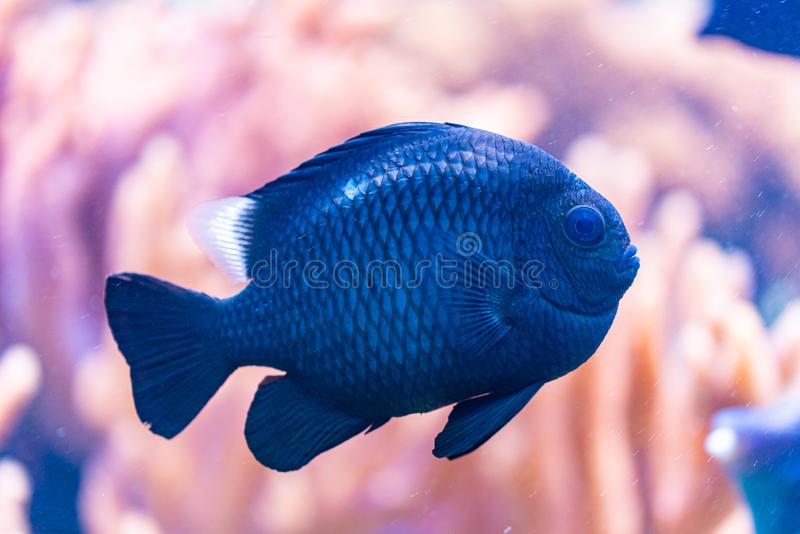ANIMAL: Threespot Domino Damselfish/Threespot Dascyllus Dascyllus trimaculatus Type of Animal: Damselfish Habitat: Around/over coral heads, inside sea anemones, hiding among sea urchins, large rocks, around branching corals, coral colonies, lagoon patch reefs, back reefs, reef faces, fore reef slopes, coral reefs, rocky reefs, lagoons, rocky substrate areas, reef edges, found at depths of 3-180.446 ft Location(s): Indo-Pacific Appearance: Gray to black fish w/ 2 lateral white spots & 1 between eyes, rather plump fish, very deep-bodied, adults lighter than juveniles (especially older adults), spots fade w/ age Food/Diet: Algae, zooplankton, planktonic copepods, krill, shrimp, squid, weeds, clams Status in Wild: Stable Conservation: Breeding in aquariums, aquaculture, & zoos. Captive breeding to reduce demand for wild-caught fish. Lifestyle: Territorial schools of 2-12. Juveniles found in schools of their own w/ as many as 25 fish. Additional Info: Called: Male Female Young: Fry Group: School Weight: Male: 6 oz Female: 3 oz Gestation: 2.5 days Life Span: 8-20 years Body Length: Male: 5 in Female: 2.5-3 in Young: 0.7 in Main predators of adults are larger fish. Wrasses, crabs, serpent stars, & brittle stars eat eggs. Also called Domino Damselfish, Three-Spot Damselfish, White-Spotted Humbug Damselfish, White-Spot Puller, & Threespot Humbug Damselfish. Males choose spawning sites-usually rocks, dead coral branches, coral rubble, or flat rock. Males quicky dip up & down & make croaking sounds. 1 clutch can have over 1,000 eggs, which male guards until hatching. Spawning sites usually have many clutches from multiple females. Once eggs hatch, they’re in larval stage for 22-24 days. Corals w/ schools of these fish nearby often grow faster. These fish especially beneficial to small polyp stony coral. Often found near anemones as juveniles & sometimes share anemones w/ clownfish/anemonefish species. They’re substrate spawners laying adhesive eggs on substrate. Active during the day (diurnal). Dominance usually based on size. Reach maturity at 6-8 months old. They’re rather difficult to breed in captivity. Color lightens when breeding. Fun Fact(s): These fish all born as females w/ more dominant females becoming males. Get domino name from 3 white spots. They’re a pretty good fit for beginner saltwater aquarists. Males guard eggs fiercely, attacking much larger fish & people who come too close.
